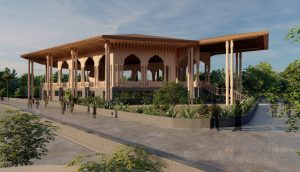

Vrindavan Forest
I wish that this track of land may be turned into New Vrindaban. You have New York, New England and So many "New" duplicates of European countries in the USA: Why not New Vrindaban in your country?
– Srila Prabhupada
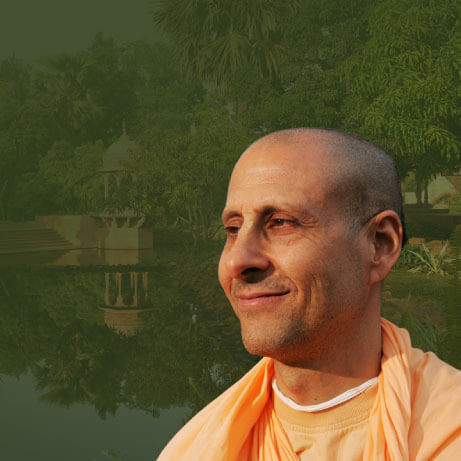
GEV Vrindavan Forest is our earnest humble offering to be a place to remember Sri Vrindavan Dham.
– Radhanth Swami’s Vision

Vrindavan Forest at Govardhan EcoVillage
The Vrindavan Forest at Govardhan EcoVillage is the exact replica of Vrindavan, at Mathura. Under the vision of HH Radhanath Swami the Vrindavan Forest at Govardhan EcoVillage has been attracting spiritual seekers and visitors. Truly, it is a forest of Grace.
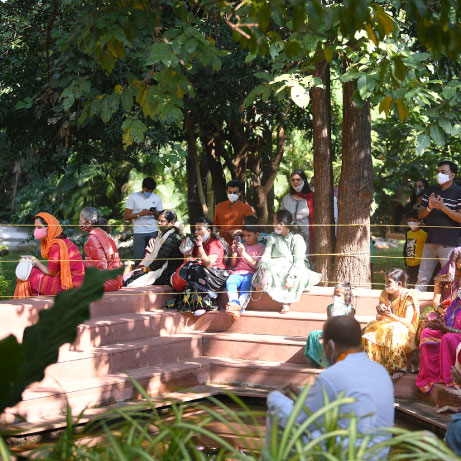
The Sacred
Vrindavan Parikrama
Govardhan Eco Village is a project of the International Society for Krishna Consciousness. It is a place of pilgrimage known as a Dhama – a holy abode of Lord Krishna. We are committed to practicing and sharing a spiritually oriented lifestyle based on the devotional principles of Bhakti coming in the lineage of the Gaudiya Vaishnava tradition.
The manifestation of this project is due to the fervent desire of Radhanatha Swami in dedication to his beloved Guru, His Divine Grace A. C. Bhaktivedanta Swami Prabhupada – “To erect for the members and society at large, a holy place of transcendental pastimes, dedicated to the personality of Krishna.”
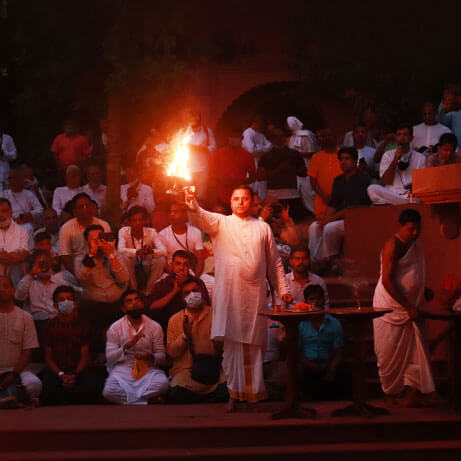
Yamuna Aarti
The beautiful river Yamuna is filled with liquid prema descended from the spiritual world of Goloka to participate in Kṛṣṇa’s eternal pastimes of love. River Yamuna can be seen in Govardhan Eco Village flowing by the Radha Madanmohan Temple, Imli Talā, Keśi-ghāta and Brahmānda-ghāta. Every evening the devotees worship Yamuna by performing Yamuna ārati.
Everyday 6.15pm the Community, Brahmacharis and guests gather for performing Yamuna Arti at Kesi Ghat. They recite the beautiful 8 verses ashtakam by Ripa Goswami ‘Munindra Vrinda Nandite’ and after special halwa prasad is distributed everyday.

Sacred Temples
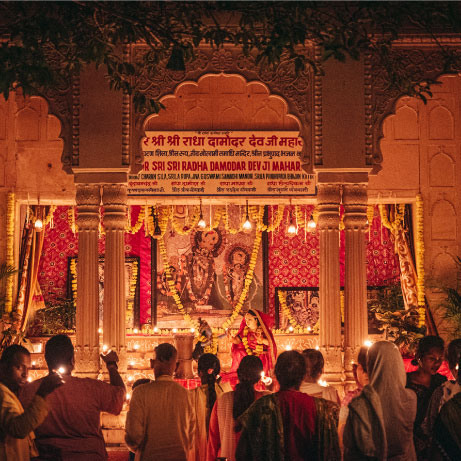
RADHA DAMODAR TEMPLE
This is one of the most important of the ‘Seven Goswami Temples’ and was established by Srila jiva Goswami, who was both the nephew and the disciple of Srila Rupa Goswami.
The original deity of Radha Damodara was personally hand carved by Rupa Goswami and given to Jiva as a gift. This deity is now being worshiped in jaipur, where all the deities of the Gaudiya Goswamis were taken for safety due to the fear they would be desecrated by nija-nikata-nivasam dehi govardhana tvam 45 the tyrant Aurangzeb’s soldiers.
The replica deity known as the pratibhu-murti, which has exactly the same potency as the original, is presently being worshiped here at the Radha Damodara Mandira. (Ref VMP) The contemporary Gosvāmīs and devotees assembled here for iṣṭagoṣṭhīs and, in those gatherings of Vaiṣṇavas, Śrī Raghunātha Bhaṭṭa would elucidate on Śrīmad-Bhāgavatam in his melodious voice. Śrī Rūpa Gosvāmī compiled Śrī Bhakti-rasāmṛta-sindhu, Ujjvala-nīlamaṇi and other sacred texts on bhakti at this place. Between the two buildings and just next to the parikrama path is a well that represents the one commissioned by Rupa Gosvami and used to serve Radha-Damodara until Srila Prabhupada’s time.
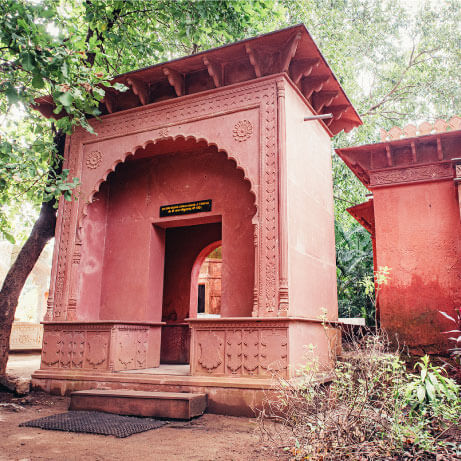
RADHA GOKULANANDA TEMPLE
The temple of Radha Gokulananda is one of the ‘Seven Goswami Temples’ of Vrindavana and was established by Lokanatha Goswami. This temple was established by Lokanatha Goswami, who in the later years of his life performed bhajan at this place. Although he was not one of the Six Goswamis, he was one of the renowned Gaudiya Goswamis and his temple is included amongst the famous ‘Seven Goswami Temples. Lokanatha is often referred to as being the ‘Seventh Goswami’ of Vrindavana.

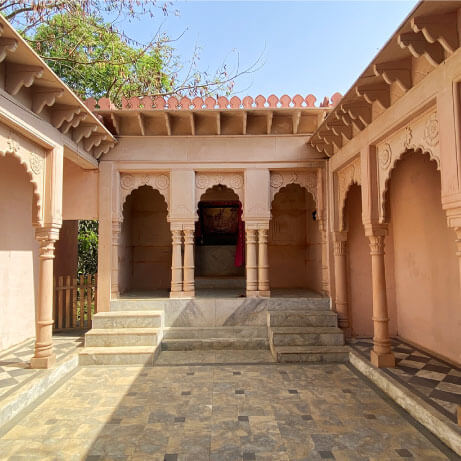
RADHA GOPINATH TEMPLE
This temple is on the banks of radhakunda near Mother Jahnav s sitting place. These Radha-Gopinatha deities were installed after jahnava-devi had received darshan of Gopinatha standing under a tamal tree on the bank of Radha-Kunda.
The deity of Lord Gopinatha was originally established by Vajranabha Maharaja at Vamsi Vata five thousand years earlier. Then during the period of the Six Goswamis the deity of Lord Gopinatha was rediscovered at Vamsi Vata lying buried in the ground near the famous banyan tree. Madhu Pandita Goswami came to Vrindavana and was searching everywhere for the deity of Lord Gopinatha.
Not finding the deity anywhere, and feeling great sorrow, Madhu Pandita gave up eating food and sat at Vamsi Vata while shedding a constant stream of tears. As it was the monsoon season there was a great flood in Vrindavana and the River Yamuna overflowed her banks. The force of the flood waters apparently swept away the old banyan tree that stood at Vamsi Vata and when the flood waters receded, the deity was seen halfburied in the ground by Madhu Pandita’s close friend and companion named Paramananda Bhattacharya, just beneath where the old banyan tree had once stood.
Paramananda immediately called his friend Madhu Pandita who retrieved the deity. The deity was then moved to the spot where the present Gopinatha temple now stands.
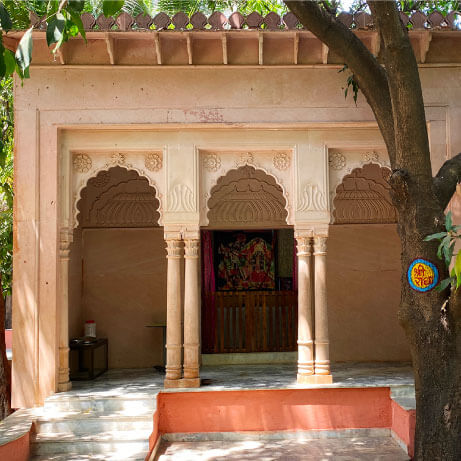
RADHA SHYAMSUNDAR TEMPLE
The temple of Radha Shyamasundara is one of the ‘Seven Goswami Temples’ of Vrindavana and was established by Shyamananda Pandita Goswami during the course of his second visit to Vrindavana.
Although he was not one of the Six Go swamis of Vrindavana, he is counted amongst the famous Gaudiya Goswamis who were important followers of Lord Chaitanya Mahaprabhu. Like Radha Damodar, the exterior of Radha Shyamsundar Temple is very modest. The courtyard is a bit larger than Radha Damodar’s, and instead of three arches, the altar nija-nikata-nivasam dehi govardhana tvam 61 has five. Tulasi grows in the courtyard and the samadhi of Shyamananda Prabhu is nearby.
Most of his disciples were from Jagannatha Puri, Orissa, evident by the plaques in Oriyan script bearing the names of temple donors. Srila Baladeva Vidyabhushana up on establishing Gaudiya Vaishnavism as a sampradaya in its own right was awarded the stewardship of Radha-Syamasundara’s temple, a service that he performed up to his last breath.


RADHA RAMAN TEMPLE
Significance of worshiping Shalagrama-shila:
This is one of the ‘Seven Goswarni Temples’ and was established by Gopala Bhatta Goswami, one of the famous Six Goswamis of Vrindavana. The deity of Radharamana suddenly self-manifested one day from a shalagrama-shila just for the pleasure of Gopala Bhatta. All shalagrama-shilas are considered to be a natural manifestation of Lord Vishnu and are therefore immediately worshipable and do not need to be installed.
The shalagrama-shila is a sacred black stone that is worshiped specifically by brahmanas and must be worshiped in all Vedic sacrifices as the yajna-pati, or principle enjoyer of the sacrifice. The shalagram-shila is also an essential part of deity worship being the principle recipient of the seva-puja, and no worship is considered complete without the shaligrama-shila being worshiped as the seva-pati.
Temple Construction:
Radha Ramana is only a short walk, on route to Kesi Ghat. We enter the temple compound through an archway leading in from the street. The new temple building for Radha Ramana was completed in 1826 by Shah Kundan Lal, the same architect who built Shahji Temple.
Temple Architecture:
Two-story buildings enclose the first courtyard, shutting out direct sunlight. We enter a second courtyard and behold the Radha Ramana Temple wedged in between a couple of buildings. The facade is built of light brown sandstone, and the main archway is decorated with spiraling lotus designs.
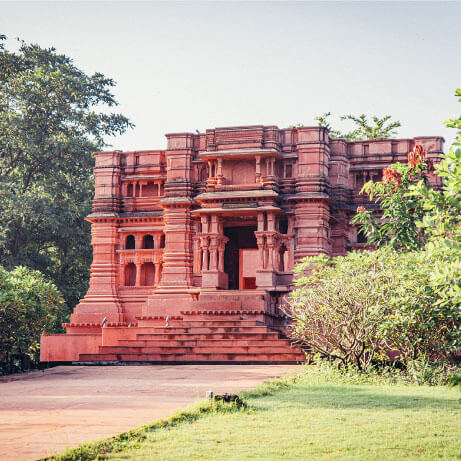
RADHA GOVINDADEVA TEMPLE
Sri-Sri Radha Govinda at Yoga-pitha are the main Deities of the Gaudiya Vaisnava Sampradaya, because They accept the devotee’s service and inspire ever-increasing surrender and loving devotion. Yoga-pitha means the meeting place or the place where a devotee can connect with Krsna and His eternal associates. The means of connection is surrendered devotional service for the pleasure of Lord Govinda, as most perfectly exemplified in the selfless actions of Srimati Radharani and the gopis.
While reading the following description of the beauty of Radha-Govinda’s Yoga-pitha, one should not forget the goal of completely dedicating himself to the loving service of the lotus feet of Sri Guru, Sri Gauranga and Sri-Sri Radha-Govinda. Actually, the Yoga-pitha means service; for the service attitude permeates everything there. The ground, the trees, the flowers, the vines, the fruits, the deer, the birds, the jewel-cottages, the wind, the Yamuna, the manjaris, the gopis and Sri Radhika everything and everyone within the Yoga-pitha exists only for the service and pleasure of Sri Govinda.

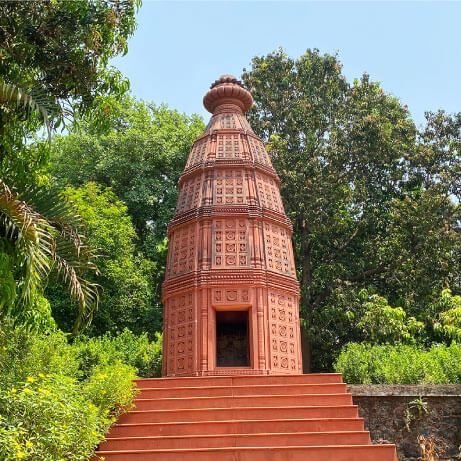
RADHA MADANMOHAN TEMPLE
Madanmohan means Krishna who is so indescribably beautiful that He even attracts Cupid, Kamadeva. Sanatana Goswami is the sambandha acarya who gives us knowledge of our proper relationship with Krishna, And his Deity, Madanmohan, helps us overcome our attraction for material sense gratification (Cupid) and fix our minds on devotional service.
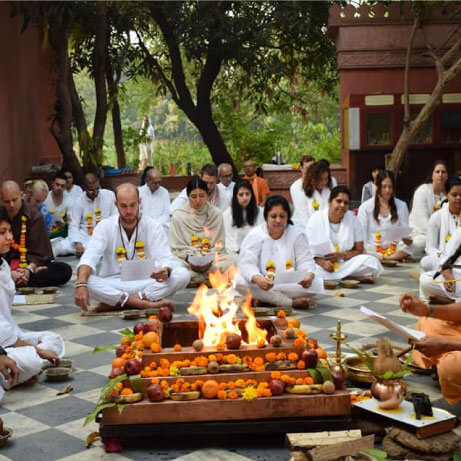
Daily Yajna
Daily Yajna in the broadest sense has been defined as a sacrificial rite or spiritual offering, generally made in a sacred fire. Every day a Vaishnava yajna offering simple prescribed items from the land e.g. clarified butter, grains, and sacred mantras are performed for the presiding deities of Govardhan Ecovillage, Sri Sri Radha Vrindaban Behari, Sri Gauranga and Lord Narsimhadeva – the divine protector.
HOW TO VISIT ISKCON GEV
For Mumbai:
- We are about 108 km from down-town Mumbai. It takes between 1.5 – 2.5 hours to reach us (depending on traffic conditions.)
- Head North on the Western Expressway: Travel north along the western express highway for most of the way. Coming from Mumbai, you will need to pass two toll gates, one at Mira Road and another at Virar. After traveling a further 28 km north take a right turn at “Ten Naka” (Manor off-ramp). You will see some land marks like Hotel Decent and Hotel Vegas just before reaching the Ten Naka turn-off.
- Take the Manor/Ten Naka off-ramp: Just after you take the off-ramp, you will pass the Hotel Taj Inn, you will need to take a right turn under the bridge into Ten Naka. Then travel another 3 km on this WADA/Manor road and look out for a narrow turn right at “Hamrapur Phata”. There is metal arch at the entrance of this road. There is also a Govardhan Ecovillage signboard at the entrance of this road.
- Turn right into Hamrapur Phata / Galtare: After taking this right turn travel along this narrow, long winding road for 7km to reach “Galtare” where Govardhan Ecovillage is located. The property is on the left of the road and you will see the signboard and bricked wall entrance gates. There is ample car parking inside the property.
For Palghar
- Govardhan Ecovillage can also be reached from Palghar which is 36 km from Govardhan Ecovillage.
- From the Palghar, take the Manor highway and travel along the ghat road to reach Manor.
- Continue further along the same direction for 3 km to join the Mumbai-Surat national highway (NH8) at “Mastan Naka”. Take a right turn at Mastan Naka and head south 1 km to reach “Ten Naka”. Take a left turn and follow the route described above.
- There is a state run public transport bus at 7:30 AM from Palghar station, that drops you directly to Govardhan Ecovillage. The destination bus stop is called “Galtare.”
- The nearest railway station is Palghar Railway station which is 36 km from Govardhan Ecovillage.
- Palghar is well connected by train from Mumbai and Gujarat. From there travel by road by bus or taxi as described above.
The nearest airport is Mumbai International Airport which is 90 km from Govardhan Ecovillage. While Visitors can hire a pre-paid taxi from the Airport directly to Govardhan Ecovillage and travel along the route described above, we recommend arranging a cab with one of our preferred cab drivers as they are trusted and aware of the route and will not get lost, as our location is outside Mumbai city.

